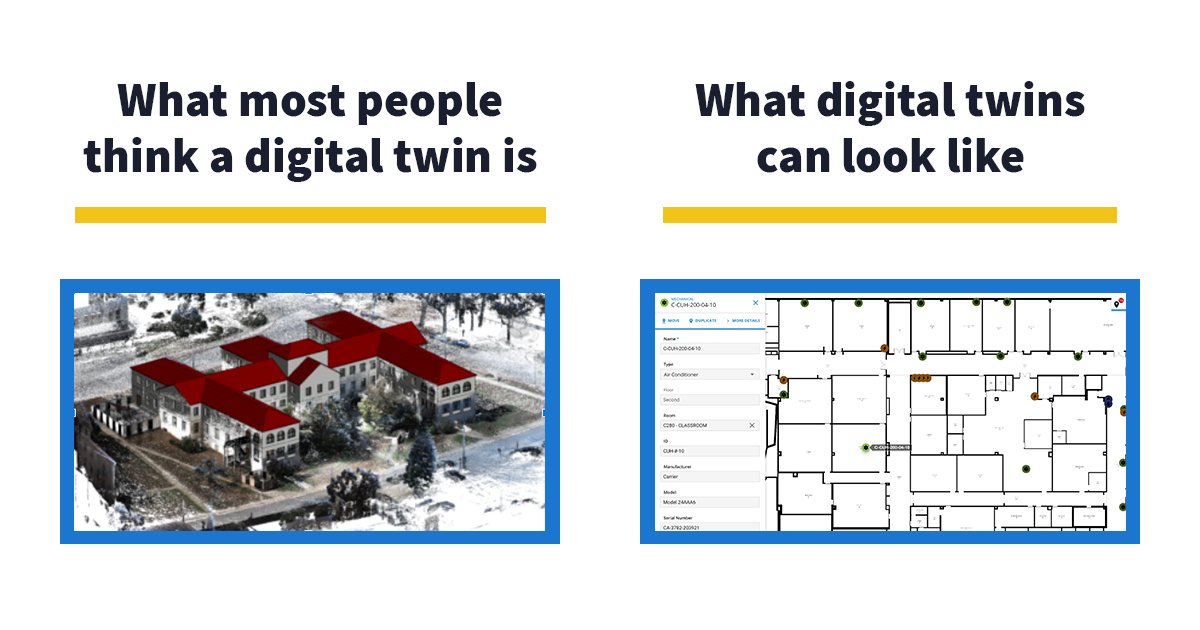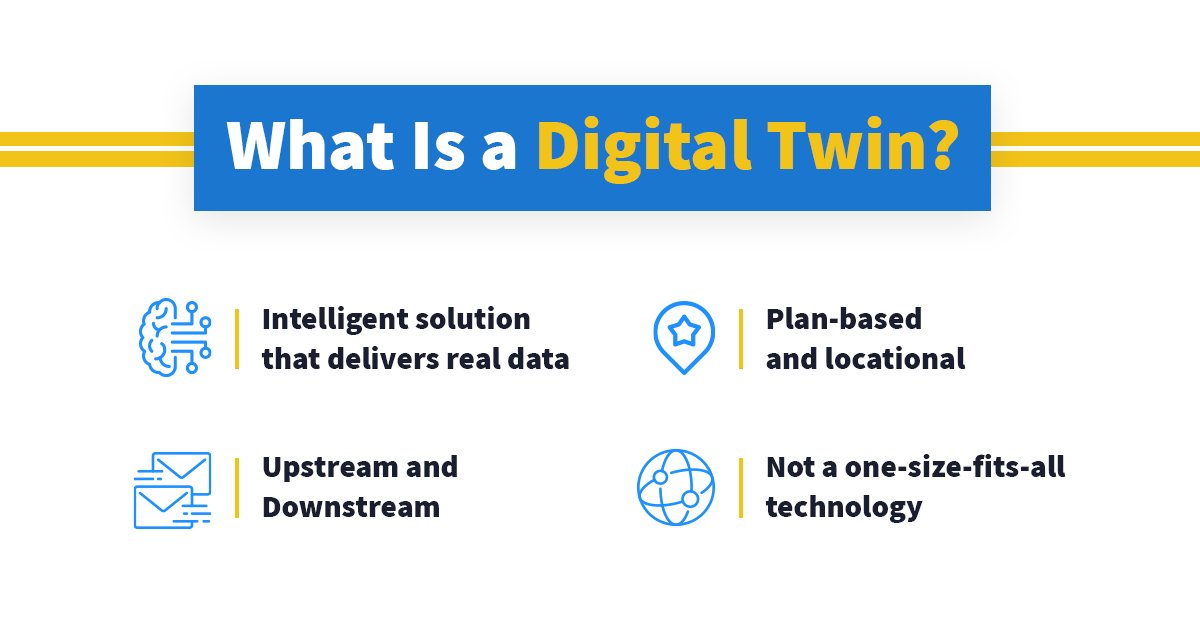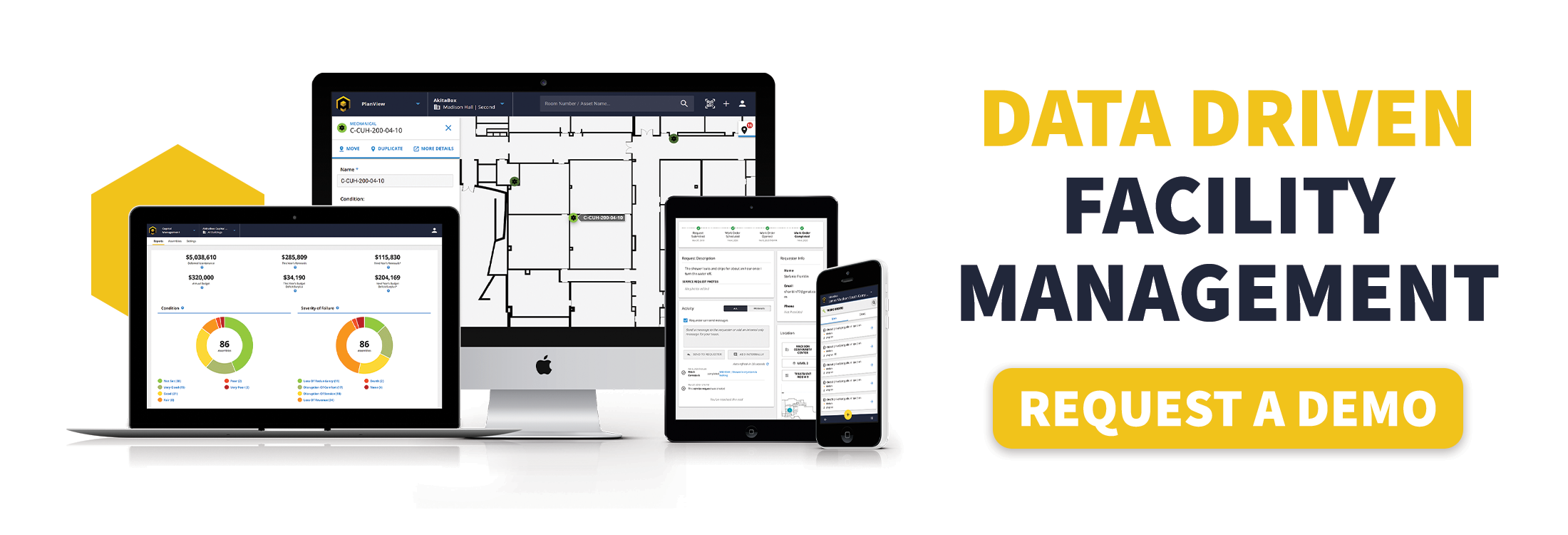Digital Twins Aren’t Science Fiction
You’re on the Starship Enterprise, when suddenly, you’re hit by enemy torpedoes! Quickly, you pull up a hologram of the entire ship to see which quadrants are damaged and which doors can be sealed to prevent further damage. Right from the hologram, you give the order to seal the necessary doors – crisis averted.
When people hear “digital twin,” they often think of Building Information Management (BIM), Revit, and full-blown 3D modeling. They tend to picture a completely digital representation of the facility through which you can control the real thing – like something straight out of science fiction.
In reality, there’s no right or wrong answer to the question, “what is a digital twin?” You could argue that any iteration of mapped building data is a digital twin of sorts. If you really wanted, your digital twin could be a hand drawing scanned into a PDF document. But it can also be so much more.
Digital twins exist on a spectrum. On one end of the spectrum is interacting with a building virtually by going into the digital twin in VR and pulling on a lever to turn a valve off out in the field. On the other end, a digital twin could be a simple map of all the asbestos in your building based on a recent inspection. They can be whatever you need them to be and include whatever information brings value to you.
BIM and Digital Twins Aren’t the Same Thing
Before we go any further, let’s take a moment to clarify that BIM and digital twins aren’t exactly synonymous. They definitely have similarities, but BIM is more suited to the construction process, while the digital twin takes BIM one step further and provides additional information necessary for operations.
BIM is a 3D model with metadata. It brings so much value during construction – especially for clash detection. But the second the construction company turns over that 3D model to the building owner, it starts becoming obsolete. Your building begins to degrade on day one, but your BIM never shows degradation – it’s just a 3D model of what the building looked like when it was constructed.
To be an effective building operations tool, a digital twin must be more than just a 3D representation. It should let you attach documentation like O&M manuals, warranties, and YouTube videos. Plus, it should connect to your building automation controls and live sensor data streams. A digital twin should allow you to take actions that affect or are directly fed from data inside your building.
4 Components of a Digital Twin
1. It’s an Intelligent Solution that Delivers Real Data
A digital twin can integrate with your building’s data systems and sensors, providing you real-time information. It can also enable you to associate documents and data streams to a specific asset or group of assets. Imagine the convenience of having the manufacturer’s instructions at your fingertips while you’re troubleshooting a piece of equipment in the field.
2. It’s Plan-Based and Locational
At a minimum, a digital twin should have objects associated with locations. It should contain the assets you care about validated, mapped, and in a digital environment where you can add more data and then interact with it. A digital twin makes it easier to know where all your assets are, what you’re maintaining and tracking within your building, and where any piece of data you need is located.
3. It Identifies What’s Upstream and Downstream
A digital twin shows you what’s upstream and downstream from each piece of equipment in your facility. Knowing exactly where you need to go and what the impacts are of the action you’re taking can save you valuable time and money.
Say you have a water leak in your building and every minute that leak continues is another $10,000 worth of damage. A digital twin can help you quickly identify which water shutoff valve is upstream from that leak so you can turn it off.
4. It’s Not a One-Size-Fits-All Technology
Every building is different – and not every facility needs the same level of sophistication in their digital twin technology. Take a college campus. The biomedical facility contains lab samples that support multi-million dollar grants. So it’s vital to have building sensor data connected to a digital twin to ensure temperature and humidity remain stable and don’t damage the valuable samples.
On the other hand, the campus chapel has three radiators that only need to be turned on and off as the seasons change. In that instance, the digital twin probably only needs to contain the location and maintenance history of those assets.
This is just one example, but it illustrates once again that a digital twin can be as complex or as simple as your facility requires.
Building Your Own Digital Twin: Where to Start
So what’s stopping you from making a digital twin? Many people are stuck in the thinking that a digital twin has to be like the hologram on the Starship Enterprise we talked about earlier. That’s impossible to ever achieve, so why even start, right?
But remember, digital twins can exist on a spectrum. You don’t have to have a fully interactive 3D model right off the bat (or even at all). Start simple. Just knowing what assets you have and when you need to replace them can lay the groundwork for a great digital twin.
A facilities management tool like AkitaBox makes a great digital twin platform. We take all of your assets and floor plans and put them into a Revit model for you. From there, you can attach photos and documents to each asset and track all your reactive and preventive maintenance. That makes for a solid beginner-level digital twin.
Here’s a sneak peek at how we create location-based asset mapping for you.
If you’re ready to get control of what’s going on in your facility, let’s talk about bringing your digital twin to life.



